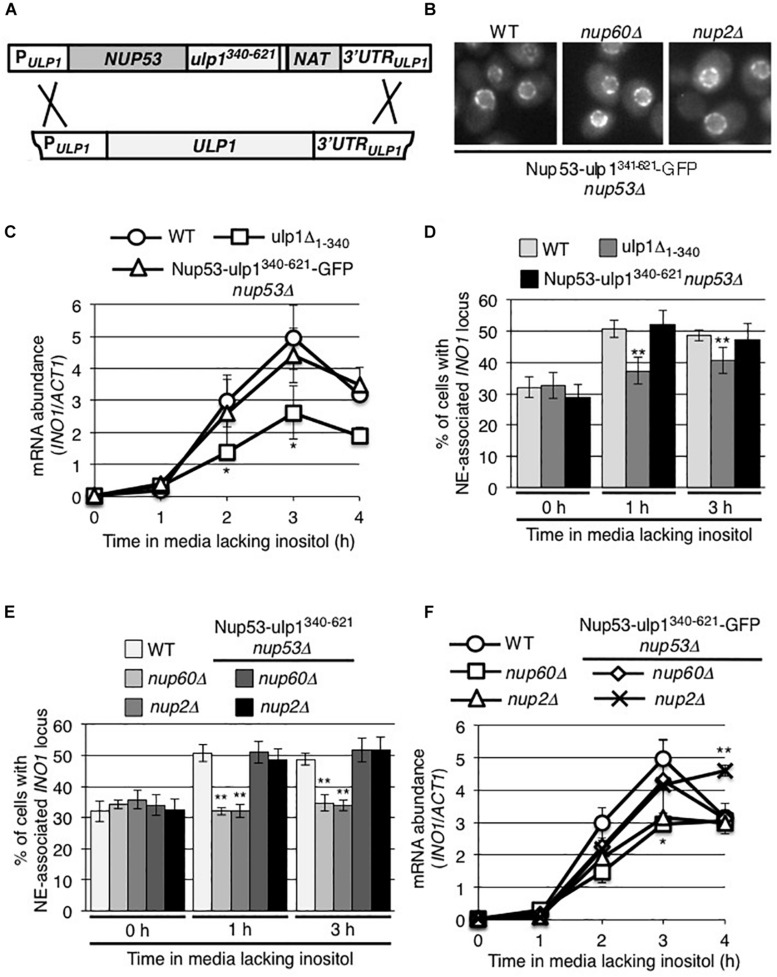FIGURE 7.
The NPC association of the C-terminal domain of Ulp1 is sufficient to support recruitment of induced INO1. (A) Endogenous ULP1 was replaced by a NUP53-ulp1340– 621 chimera under the control of the ULP1 promoter in a haploid yeast strain. A schematic representation of the construction of this chimeric gene is shown. (B) Localization of the Nup53-ulp1340– 621 fusion protein C-terminally tagged with GFP was examined in an otherwise WT background or in strains lacking NUP60 or NUP2. (C,F) Levels of mRNA encoded by the INO1 gene were evaluated by qRT-PCR following induction for the indicated times; (C) in WT, NUP53-ulp1340– 621, and ulp1Δ1–340 strains and (F) in WT, nup60Δ, nup2Δ, NUP53-ulp1340– 621 nup60Δ, and NUP53-ulp1340– 621 nup2Δ strains as described in Figure 2. Results are the means ± SEM of three biological replicates. (D,E) Localization of the INO1-lacO256 locus was examined prior to (0 h) or at 1 and 3 h after induction in the indicated strain backgrounds. Note that the data shown here for ulp1Δ1–340 in D are the same as that in Figure 5A and are shown here for comparison. Localization of INO1-lacO256 locus was assessed as described in Figure 2. Results are the means ± SD of at least three biological replicates. For D and E, at least 100 cells were counted for each replicate. Asterisks indicate a significant difference from WT samples at the corresponding time points as indicated by Student’s unpaired t-test. *p < 0.05, **p < 0.01.

